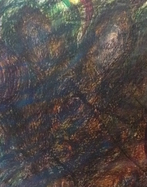圏における極限を定義し, 完備性の概念を述べた.
圏が完備であるということの定義は次のようなものである.
定義 (完備性). 圏 $\mathscr{C}$ において, 任意の有限図式の極限が存在するとき, $\mathscr{C}$ は有限完備 (finite complete) であると言う. さらに任意の図式の極限が存在するとき, $\mathscr{C}$ は完備 (complete) であると言う.
極限に関して, 特に次の定理が成り立つ.
定理. 集合の圏 $\mathbf{Set}$ は完備である.
証明の概略をまとめておく.
証明. $D : \mathscr{I} \rightarrow \mathbf{Set}$ を集合の圏 $\mathbf{Set}$ における任意の図式とする. $*$ を一点集合とし, 集合 $P$ を $*$ を頂点とする図式 $D$ 上の可換錐全体からなる集合, すなわち
\begin{equation*}
\DeclareMathOperator{\Ar}{Ar}
\DeclareMathOperator{\Arccos}{Arccos}
\DeclareMathOperator{\Arcsin}{Arcsin}
\DeclareMathOperator{\Arr}{Arr}
\DeclareMathOperator{\Card}{card}
\DeclareMathOperator{\Codomain}{cod}
\DeclareMathOperator{\Colim}{colim}
\DeclareMathOperator{\Cocone}{Cocone}
\DeclareMathOperator{\Cone}{Cone}
\DeclareMathOperator{\Domain}{dom}
\DeclareMathOperator{\Hom}{Hom}
\DeclareMathOperator{\In}{in}
\DeclareMathOperator{\INIT}{init}
\DeclareMathOperator{\Nat}{Nat}
\DeclareMathOperator{\Ob}{Ob}
\DeclareMathOperator{\Path}{Path}
\DeclareMathOperator{\SF}{SF}
\DeclareMathOperator{\Sub}{Sub}
\DeclareMathOperator{\TERM}{term}
\newcommand{\Abs}[1]{\lvert{#1}\rvert}
\newcommand{\Cdot}{\,\cdot^{\mathrm{op}}}
\newcommand{\CommaCat}[2]{(#1/#2)}
\newcommand{\Emph}[1]{\textit{#1}}
\newcommand{\Eqclass}[4]{{#1#2#3}_{#4}}
\newcommand{\EqCls}[2]{{\left[#1\right]}_{#2}}
\newcommand{\Eqcls}[1]{\left[#1\right]}
\newcommand{\FnRest}[2]{{#1}|{#2}}
\newcommand{\Func}[2]{\mathrm{Func}(#1,#2)}
\newcommand{\g}{\varg}
\newcommand{\Id}[1]{\mathrm{id}_{#1}}
\newcommand{\Inc}[2]{\mathrm{incl}\left(#1,#2\right)}
\newcommand{\Incl}[2]{\mathrm{incl}_{#1}^{#2}}
\newcommand{\InclArrow}[2]{\morphism(0,0)/>->/<450,0>[\Incl{#1}{#2} : {#1}\,\,`{#2};]}
\newcommand{\Lb}[1]{\mathrm{lb}(#1)}
\newcommand{\Lowerset}[1]{\downarrow\!\!{#1}}
\newcommand{\Mb}[1]{\mathbf{#1}}
\newcommand{\Mbb}[1]{\mathbb{#1}}
\newcommand{\Mi}[1]{\mathit{#1}}
\newcommand{\Mlb}[1]{\mathrm{mlb}(#1)}
\newcommand{\Mr}[1]{\mathrm{#1}}
\newcommand{\Ms}[1]{\mathscr{#1}}
\newcommand{\Mt}[1]{\mathtt{#1}}
\newcommand{\Mub}[1]{\mathrm{mub}(#1)}
\newcommand{\Opp}[1]{{#1}^{\mathrm{op}}}
\newcommand{\Prj}[2]{\mathrm{proj}\left(#1,#2\right)}
\newcommand{\Proj}[2]{\mathrm{proj}^{#1}_{#2}}
\newcommand{\Pw}{\mathbf{P}}
\newcommand{\Rn}[1]{{\bmdefine{R}}^{#1}}
\newcommand{\q}{\hspace{1em}}
\newcommand{\qq}{\hspace{0.5em}}
\newcommand{\Rel}[1]{\langle{#1}\rangle}
\newcommand{\Rest}[2]{{#1}|{#2}}
\newcommand{\SkelCat}[1]{\mathrm{sk}(#1)}
\newcommand{\Slash}[1]{{\ooalign{\hfil/\hfil\crcr$#1$}}}
\newcommand{\SliCat}[2]{{#1}\,\big/\,{#2}}
\newcommand{\Src}{d^{0,\mathrm{op}}}
\newcommand{\ssqrt}[1]{\sqrt{\smash[b]{\mathstrut #1}}}
\newcommand{\Tgt}{d^{1,\mathrm{op}}}
\newcommand{\TwArCat}[1]{\mathrm{Tw}(#1)}
\newcommand{\Ub}[1]{\mathrm{ub}(#1)}
\newcommand{\Upperset}[1]{\uparrow\!\!{#1}}
\newcommand{\VectCat}[1]{#1 \mathchar`- \mathbf{Vect}}
\newcommand{\Grp}{\mathbf{Grp}}
\newcommand{\Mon}{\mathbf{Mon}}
\newcommand{\POs}{\mathbf{Poset}}
\newcommand{\Psh}{\mathbf{Psh}}
\newcommand{\Set}{\mathbf{Set}}
\newcommand{\Sh}{\mathbf{Sh}}
\newcommand{\Top}{\mathbf{Top}}
\newcommand{\sA}{\mathscr{A}}
\newcommand{\sB}{\mathscr{B}}
\newcommand{\sC}{\mathscr{C}}
\newcommand{\sD}{\mathscr{D}}
\newcommand{\sE}{\mathscr{E}}
\newcommand{\sF}{\mathscr{F}}
\newcommand{\sG}{\mathscr{G}}
\newcommand{\sH}{\mathscr{H}}
\newcommand{\sI}{\mathscr{I}}
\newcommand{\sJ}{\mathscr{J}}
\newcommand{\sK}{\mathscr{K}}
\newcommand{\sL}{\mathscr{L}}
\newcommand{\sM}{\mathscr{M}}
\newcommand{\sN}{\mathscr{N}}
\newcommand{\sO}{\mathscr{O}}
\newcommand{\sP}{\mathscr{P}}
\newcommand{\sR}{\mathscr{R}}
\newcommand{\sS}{\mathscr{S}}
\newcommand{\sT}{\mathscr{T}}
\newcommand{\sU}{\mathscr{U}}
\newcommand{\sV}{\mathscr{V}}
\newcommand{\sW}{\mathscr{W}}
\newcommand{\sX}{\mathscr{X}}
\newcommand{\sY}{\mathscr{Y}}
\newcommand{\sZ}{\mathscr{Z}}
\newcommand{\Natural}{\mathbf{{N}}}
\newcommand{\bmN}{\mathbf{{N}}}
\newcommand{\Integer}{\mathbf{{Z}}}
\newcommand{\bmZ}{\mathbf{{Z}}}
\newcommand{\Real}{R}
\newcommand{\bmR}{R}
\newcommand{\Rational}{Q}
\newcommand{\bmQ}{Q}
\newcommand{\Complex}{\mathbf{{C}}}
\newcommand{\bmC}{\mathbf{{C}}}
P = \Cone(*,D)
\end{equation*} と定義する. $P$ を頂点とする $D$ 上の錐 (cone) $p : P \rightarrow D$ を
\begin{equation*}
(p(i))(c) = (c(i))(*) \quad (i \in \Ob{\sI}; c \in P).
\end{equation*} と定義する (一点集合 $*=\{\bullet\}$ に対して $(p(i))(c)=(c(i))(\bullet)$ と記述するほうがより正確かも知れない. しかしいずれにせよ各 $c(i) : * \rightarrow D(i)$ は $*$ 上で 1 つの値のみを取るので, $(p(i))(c)=(c(i))(*)$ という記述で混乱は無いだろう).
$p$ が可換錐であることを示す. $\sI$ の任意の射 $e : i \rightarrow j$ に対して図式
\begin{equation*}
\begin{xy}
\xymatrix {
& P \ar[ldd]_{p(i)} \ar[rdd]^{p(j)} & \\
& & \\
D(i) \ar[rr]_{D(e)} & & D(j)
}
\end{xy}
\end{equation*} を考える. 可換錐 $c \in P$ について, $c$ の可換性から
\begin{equation*}
D(e) \circ p(i)(c) = D(e) \circ c(i)(*) = c(j)(*) = p(j)(c)
\end{equation*} となるから $p$ は $P$ を頂点とする $D$ 上の可換錐である.
$P=\lim{D}$ であることを示す. $h : T \rightarrow D$ を $D$ 上の任意の可換錐とする. 各 $t \in T$ に対して, 可換錐 $u(t) : * \rightarrow D$ を
\begin{equation*}
(u(t))(*) = h(t)
\end{equation*} によって定義する. これにより写像 $u : T \rightarrow P$ が定まる. ここで図式
\begin{equation}
\label{dgm:p.u=h}
\begin{xy}
\xymatrix@=48pt {
T \ar[d]_{u} \ar[dr]^{h} & \\
P \ar[r]_{p} & D
}
\end{xy}
\end{equation} を考えると, 各 $t \in T,\, i \in \Ob{\sI}$ に対して
\begin{equation*}
(p \circ u)(i)(t) = p(i) \circ u(t) = p(i)(u(t)) = (u(t)(i))(*) = h(i)(t).
\end{equation*} よって $p \circ u = h$ であり図式 (\ref{dgm:p.u=h}) は可換である.
$u$ が一意的に定まることを示す. 射 $v : T \rightarrow P$ が $p \circ v = h$ を満たす, すなわち図式
\begin{equation*}
\begin{xy}
\xymatrix@=48pt {
T \ar[d]_{v} \ar[dr]^{h} & \\
P \ar[r]_{p} & D
}
\end{xy}
\end{equation*} を可換にすると仮定する. このとき, 任意の可換錐 $t \in T$ に対して
\begin{equation*}
(v(t))(*) = p(v(t)) = p \circ v(t) = h(t) = p \circ u(t) = p(u(t)) = (u(t))(*)
\end{equation*} が成り立つ. これより $v=u$ であり $u$ は図式 (\ref{dgm:p.u=h}) を可換にする一意的な射である.
したがって $P=\Cone(*,D)=\lim{D}$ であり $p: P \rightarrow D$ は $P$ に伴う普遍的な可換錐である.
例.
まずグラフ $\sI_1$, $\sI_2$, $\sI_3$ を
\begin{equation*}
\begin{xy}
\xymatrix {
\sI_1: & 1 & 2 \\
}
\end{xy}
\end{equation*}
\begin{equation*}
\begin{xy}
\xymatrix {
\sI_2: & 1 \ar[r]^{e_1} & 3 & 2 \ar[l]_{e_2}
}
\end{xy}
\end{equation*}
\begin{equation*}
\begin{xy}
\xymatrix {
\sI_3: & 1 \ar@<5pt>[r]^{e_1} \ar@<-5pt>[r]_{e_2} & 2
}
\end{xy}
\end{equation*} のように定義し, 各々に対応する $\Set$ 内の図式 $D_i : \sI_i \rightarrow \Set\, (i=1,2,3)$ を
\begin{equation*}
\begin{xy}
\xymatrix@=48pt {
D_1: & A=D_1(1) & B=D_1(2) \\
}
\end{xy}
\end{equation*}
\begin{equation*}
\begin{xy}
\xymatrix@=48pt {
D_2: & & B=D_2(2) \ar[d]^{g=D_2(e_2)} \\
& A=D_2(1) \ar[r]_{f=D_2(e_1)} & C=D_2(3)
}
\end{xy}
\end{equation*}
\begin{equation*}
\begin{xy}
\xymatrix@=48pt {
D_3: & A=D_3(1) \ar@<5pt>[r]^{f=D_3(e_1)} \ar@<-5pt>[r]_{g=D_3(e_2)} & B=D_3(2)
}
\end{xy}
\end{equation*} と定義する.
これら 3 つの図式は $\Set$ において極限
\begin{alignat*}{2}
\lim{D_1} & = {D_1(1) \times D_1(2)} = {A \times B} = \{(a,b) \mid a \in A,\, b \in B \} & \quad & (直積), \\
\lim{D_2} & = {D_2(1) \times_{D_2(3)} D_2(2)} = {A \times_C B} = \{(a,b) \in {A \times B} \mid f(a)=g(b) \} & & (引き戻し, あるいはファイバー積), \\
\lim{D_3} & = Eq(D_3(e_1),D_3(e_2)) = Eq(f,g) = \{ a \in A \mid f(a)=g(a) \} & & (イコライザー)
\end{alignat*} を与える. これらは以下に示す図式を可換にする. $p_1, p_2, p$ などの写像は各々の極限に付随する普遍的な可換錐を成すものである.
\begin{equation*}
\begin{xy}
\xymatrix@=48pt {
\lim{D_1}: & A & {A \times B} \ar[l]_{p_1} \ar[r]^{p_2} & B \\
}
\end{xy}
\end{equation*}
\begin{equation*}
\begin{xy}
\xymatrix@=48pt {
\lim{D_2}: & {A \times_C B} \ar[d]_{p_1} \ar[r]^{p_2} & B \ar[d]^{g} \\
& A \ar[r]_{f} & C
}
\end{xy}
\end{equation*}
\begin{equation*}
\begin{xy}
\xymatrix@=48pt {
\lim{D_3}: & Eq(f,g) \ar[r]^{p} & A \ar@<5pt>[r]^{f} \ar@<-5pt>[r]_{g} & B
}
\end{xy}
\end{equation*}
上の定理の証明で与えた一点集合 $*$ から図式 $D$ への可換錐全体の集合 $\Cone(*,D)$ が実際にこれらの極限を与えていることを確かめる.
(1) $\lim{D_1} = {A \times B} = \{ (a,b) \mid a \in A,\, b \in B \}$:
\begin{align*}
\Cone(*,D_1) & = \{ \alpha : * \rightarrow D_1 \mid \text{$\alpha$ は $*$ を頂点とする $D_1$ 上の可換錐},\, \alpha(1)(*) \in A,\, \alpha(2)(*) \in B \} \\
& \simeq \{ (\alpha(1)(*), \alpha(2)(*)) \mid \alpha(1)(*) \in A,\, \alpha(2)(*) \in B\, \text{$\alpha$ は $*$ を頂点とする $D_1$ 上の可換錐} \} \\
& = \{ (a,b) \mid a \in A,\, b \in B \} \\
& = {A \times B}.
\end{align*}
(2) $\lim{D_2} = {A \times_C B} = \{ (a,b) \in {A \times B} \mid f(a)=g(b) \}$:
\begin{align*}
\Cone(*,D_2) & = \{ \alpha : * \rightarrow D_2 \mid \text{$\alpha$ は $*$ を頂点とする $D_2$ 上の可換錐},\, f(\alpha(1)(*))=\alpha(3)(*)=g(\alpha(2)(*)) \} \\
& \simeq \{ (\alpha(1)(*),\alpha(3)(*),\alpha(2)(*)) \in {A \times C \times B} \mid f(\alpha(1)(*))=\alpha(3)(*)=g(\alpha(2)(*)), \\
& \hspace{4em} \text{$\alpha$ は $*$ を頂点とする $D_2$ 上の可換錐} \} \\
& = \{ (a,c,b) \in {A \times C \times B} \mid f(a)=c=g(b) \} \\
& \simeq \{ (a,b) \in {A \times B} \mid f(a)=g(b) \} \\
& = {A \times_C B}.
\end{align*}
(3) $\lim{D_3} = Eq(f,g) = \{ a \in A, \mid f(a)=g(b) \}$:
\begin{align*}
\Cone(*,D_3) & = \{ \alpha : * \rightarrow D_3 \mid \text{$\alpha$ は $*$ を頂点とする $D_3$ 上の可換錐},\, f(\alpha(1)(*))=g(\alpha(1)(*))=\alpha(2)(*) \} \\
& \simeq \{ (\alpha(1)(*),\alpha(2)(*)) \in {A \times B} \mid f(\alpha(1)(*))=g(\alpha(1)(*))=\alpha(2)(*), \\
& \hspace{4em} \text{$\alpha$ は $*$ を頂点とする $D_3$ 上の可換錐} \} \\
& = \{ (a,b) \in {A \times B} \mid f(a)=g(a)=b \} \\
& \simeq \{ a \in A \mid f(a)=g(a) \} \\
& = Eq(f,g).
\end{align*}
したがって, $\Cone(*,D_i)\,(i=1,2,3)$ の各々は確かにそれぞれ図式 $D_1,D_2,D_3$ に対する極限を与えている.
【このカテゴリーの最新記事】
-
no image
-
no image
-
no image
-
no image
-
no image
